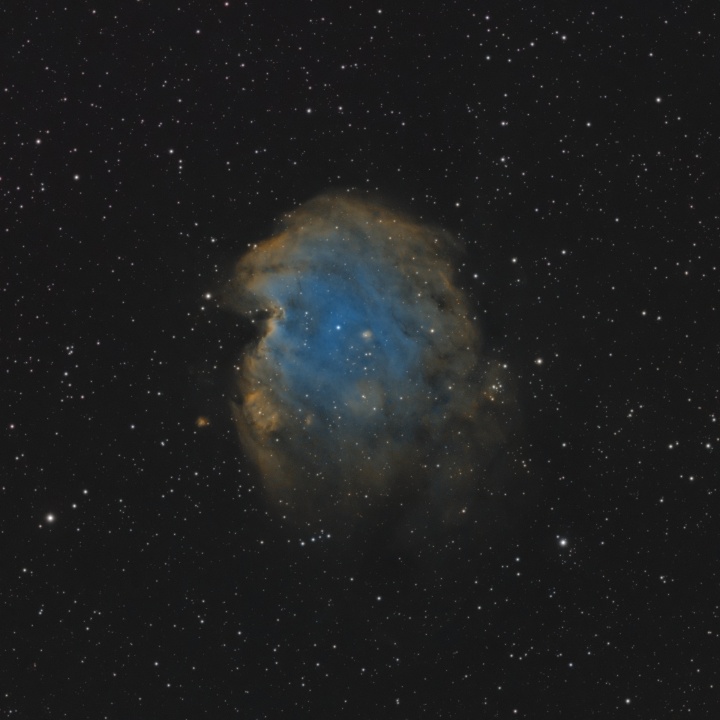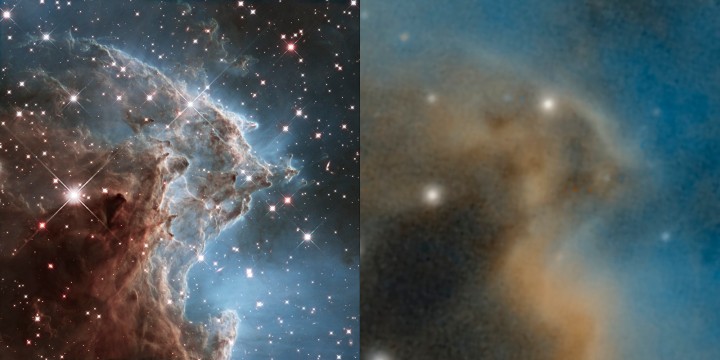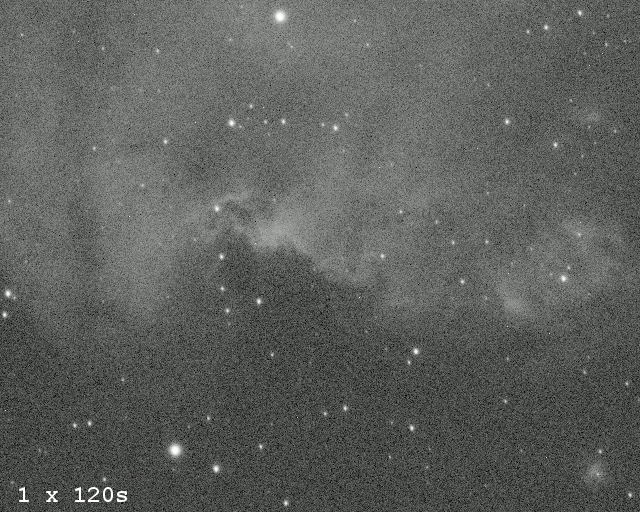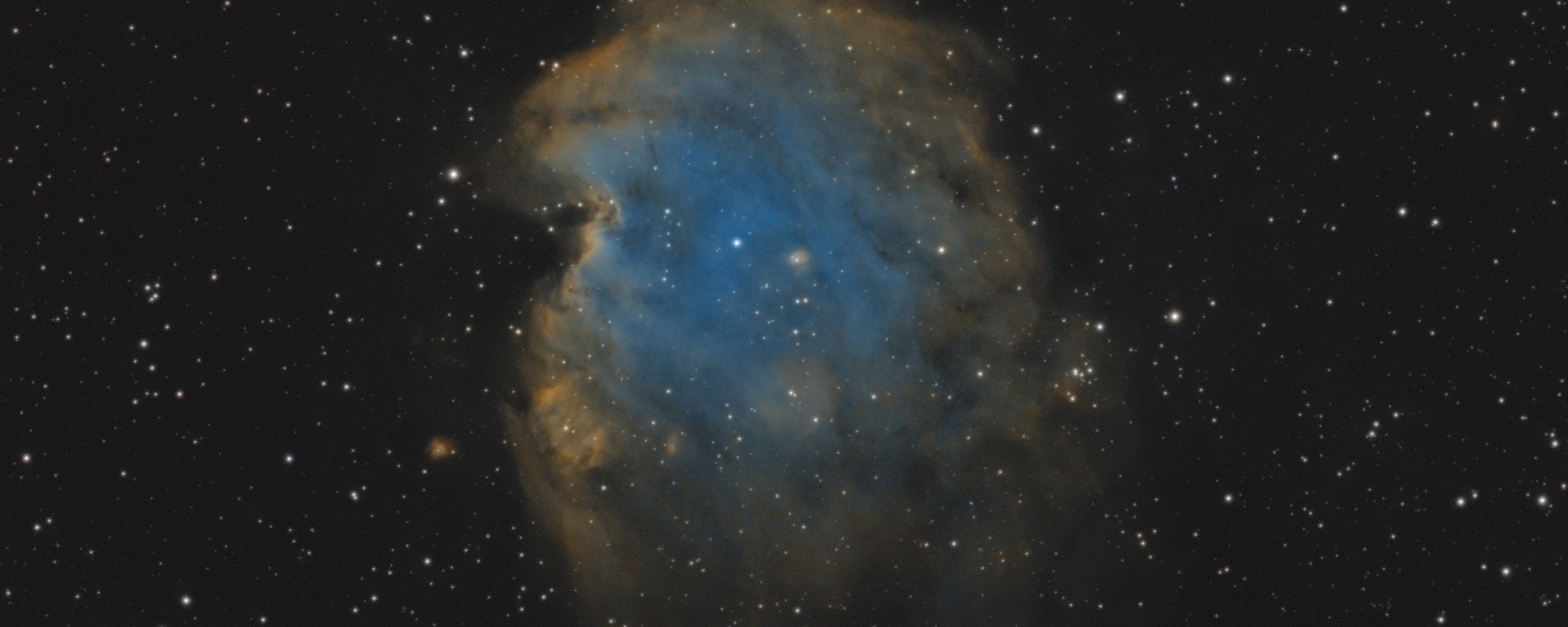I have wanted to shoot this nebula for a long time, and finally got an opportunity to do this after a fun night out with friends.
NGC 2174 is a star forming region in Orion with interesting dark structures that resemble the profile of a monkey’s head. In the center of this emission nebula lies the star cluster known as NGC 2175.

Technical details and equipment used:
I setup APT to capture mostly Ha subs, as I found out that you can get pretty good colors with just a little OIII and SII. The three channels were first converted to tone maps, combined as SHO, and Ha was used as a luminance layer. This approach included strong noise reduction in the OIII and SII tone maps, which allowed stronger stretching of these channels despite their limited integration time.
A small part of NGC 2174 was also photographed by the Hubble space telescope (HST) in 2014, using the wide field and infrared (FC3/IR) camera: http://hubblesite.org/image/3336/news_release/2014-18
I’ve compared the results from the HST and my small telescope in the two images below. These clearly show the large difference in field of view and resolution of the HST. The infrared camera of HST also allows us to see inside the dark dust regions.

And when viewed side-by-side:

To emphasize the incredible results of the HST a bit more, this little animated gif shows how the details and contrast improve when I stacked multiple 2-minute sub-exposures. Each doubling of the signal-to-noise ratio requires 4 times more exposure time, so it adds up quickly. Even with almost 2 hours of photon-collection time, the result is still far from Hubble’s image.



